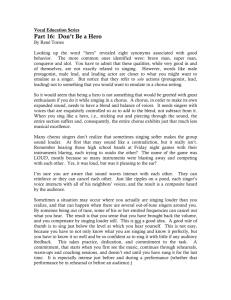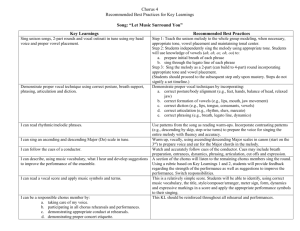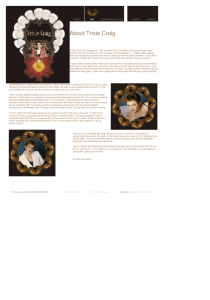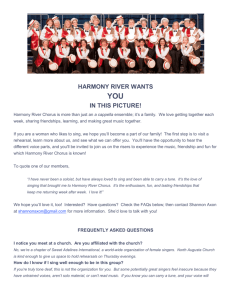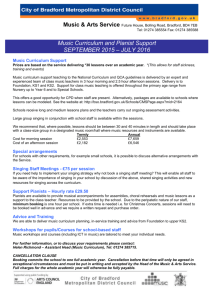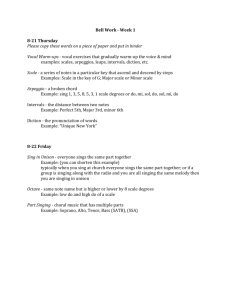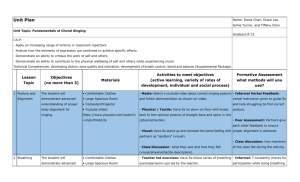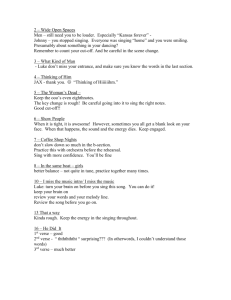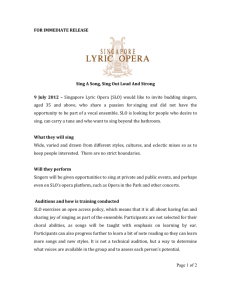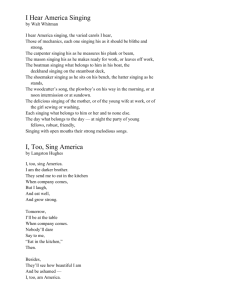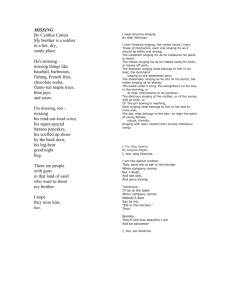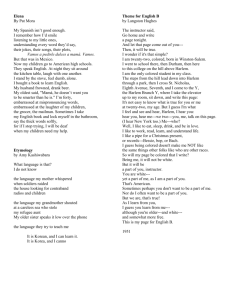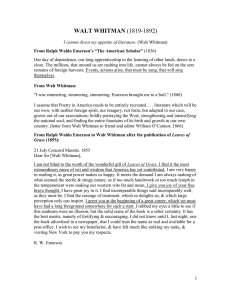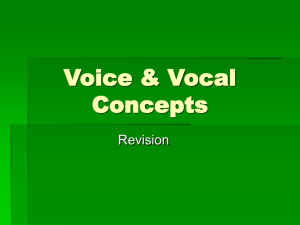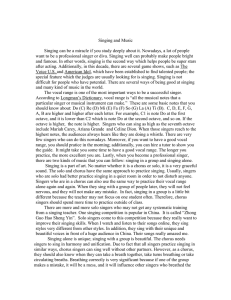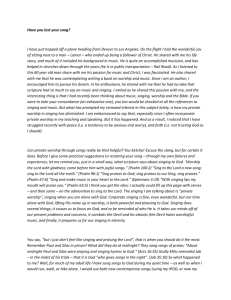- Idaho Falls A Cappella Chorus
advertisement
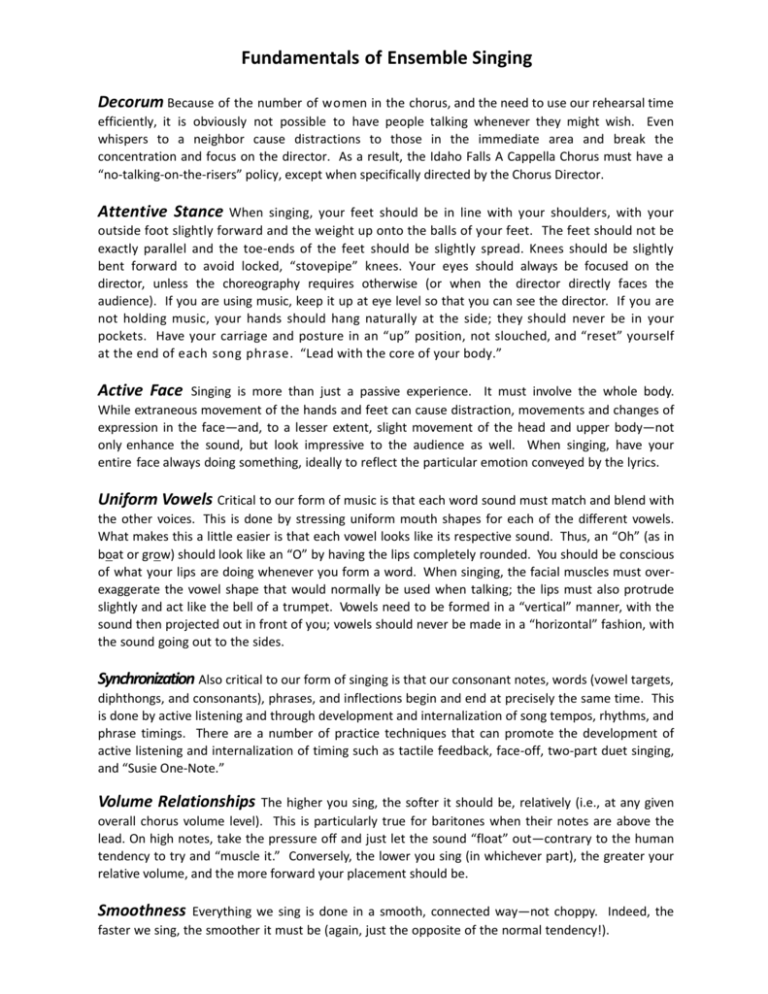
Fundamentals of Ensemble Singing Decorum Because of the number of women in the chorus, and the need to use our rehearsal time efficiently, it is obviously not possible to have people talking whenever they might wish. Even whispers to a neighbor cause distractions to those in the immediate area and break the concentration and focus on the director. As a result, the Idaho Falls A Cappella Chorus must have a “no-talking-on-the-risers” policy, except when specifically directed by the Chorus Director. Attentive Stance When singing, your feet should be in line with your shoulders, with your outside foot slightly forward and the weight up onto the balls of your feet. The feet should not be exactly parallel and the toe-ends of the feet should be slightly spread. Knees should be slightly bent forward to avoid locked, “stovepipe” knees. Your eyes should always be focused on the director, unless the choreography requires otherwise (or when the director directly faces the audience). If you are using music, keep it up at eye level so that you can see the director. If you are not holding music, your hands should hang naturally at the side; they should never be in your pockets. Have your carriage and posture in an “up” position, not slouched, and “reset” yourself at the end of each song phrase. “Lead with the core of your body.” Active Face Singing is more than just a passive experience. It must involve the whole body. While extraneous movement of the hands and feet can cause distraction, movements and changes of expression in the face—and, to a lesser extent, slight movement of the head and upper body—not only enhance the sound, but look impressive to the audience as well. When singing, have your entire face always doing something, ideally to reflect the particular emotion conveyed by the lyrics. Uniform Vowels Critical to our form of music is that each word sound must match and blend with the other voices. This is done by stressing uniform mouth shapes for each of the different vowels. What makes this a little easier is that each vowel looks like its respective sound. Thus, an “Oh” (as in boat or grow) should look like an “O” by having the lips completely rounded. You should be conscious of what your lips are doing whenever you form a word. When singing, the facial muscles must overexaggerate the vowel shape that would normally be used when talking; the lips must also protrude slightly and act like the bell of a trumpet. Vowels need to be formed in a “vertical” manner, with the sound then projected out in front of you; vowels should never be made in a “horizontal” fashion, with the sound going out to the sides. Synchronization Also critical to our form of singing is that our consonant notes, words (vowel targets, diphthongs, and consonants), phrases, and inflections begin and end at precisely the same time. This is done by active listening and through development and internalization of song tempos, rhythms, and phrase timings. There are a number of practice techniques that can promote the development of active listening and internalization of timing such as tactile feedback, face-off, two-part duet singing, and “Susie One-Note.” Volume Relationships The higher you sing, the softer it should be, relatively (i.e., at any given overall chorus volume level). This is particularly true for baritones when their notes are above the lead. On high notes, take the pressure off and just let the sound “float” out—contrary to the human tendency to try and “muscle it.” Conversely, the lower you sing (in whichever part), the greater your relative volume, and the more forward your placement should be. Smoothness Everything we sing is done in a smooth, connected way—not choppy. Indeed, the faster we sing, the smoother it must be (again, just the opposite of the normal tendency!).


